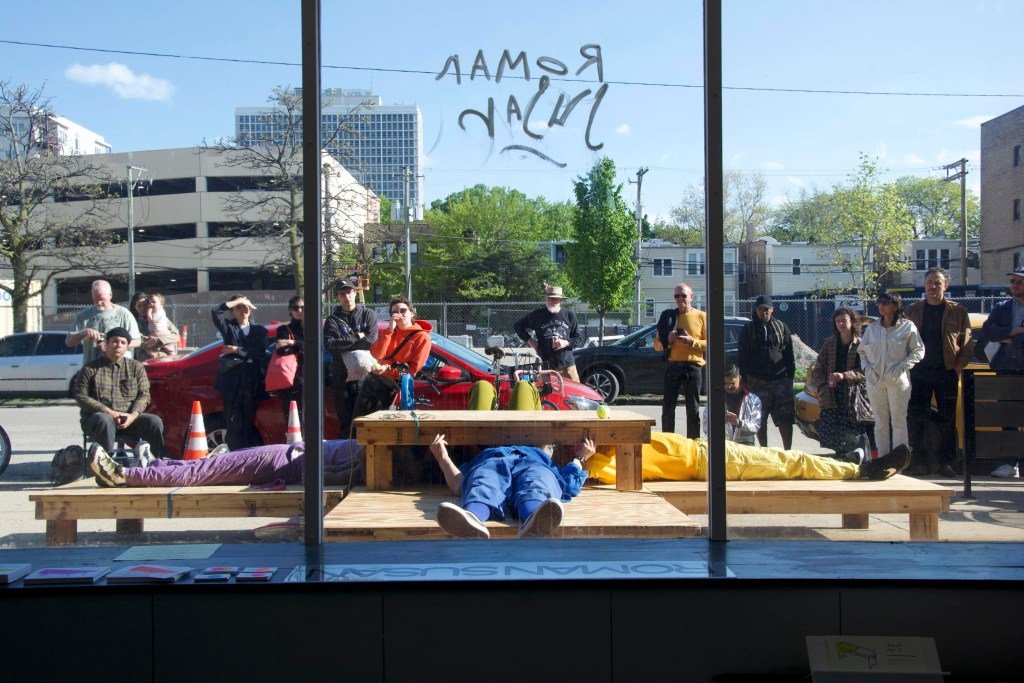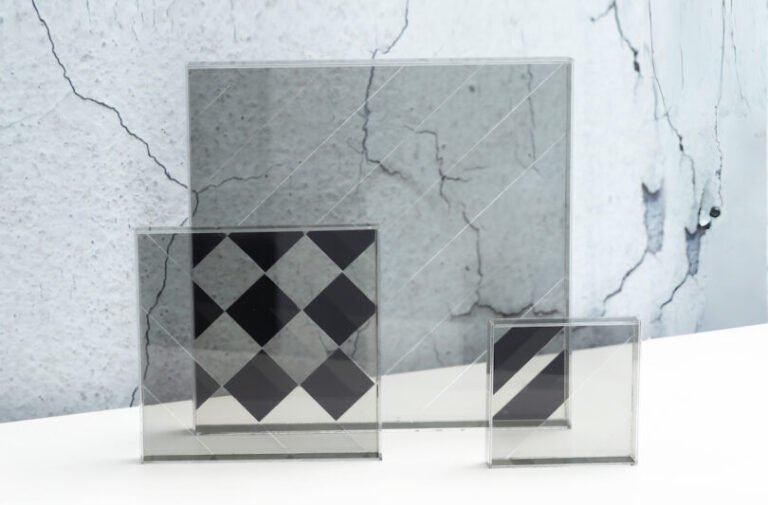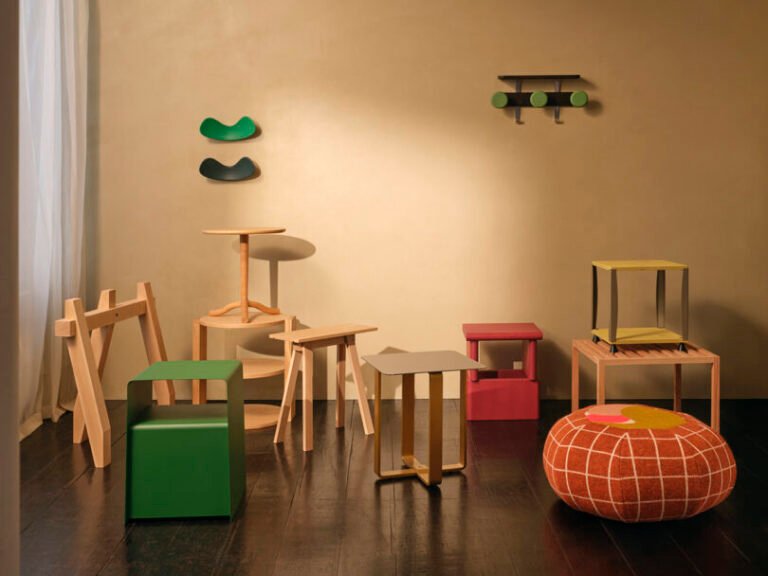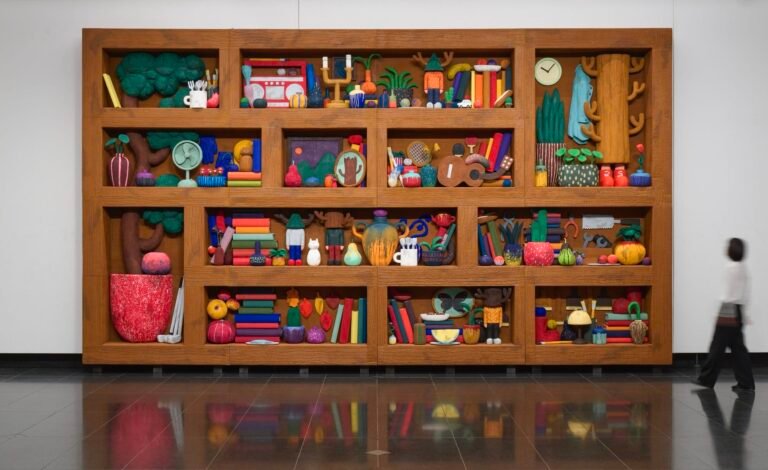

CHICAGO — On a recent Saturday night, I sat in a tiny storefront with a dozen or so others. Three dancers moved with glacial slowness not 10 feet in front of us, illuminated by the streetlights outside. Eerie sounds buzzed throughout the space. “Nether,” by Zachary Nicol, was 30 minutes of dystopia until, at the very last minute, it was not, by the grace of the trio finally linking their bodies together.
This was not my first experience at Roman Susan, a gallery of just 280 square feet located in a wedge-shaped space on the ground floor of a nearly 100-year-old flatiron building — but it will be one of my last. The artist-run nonprofit, which Nathan and Kristin Abhalter Smith opened in 2012, will close on September 30 because the building in which it resides, 1224–1234 West Loyola Avenue in Rogers Park, has been emptied out and slated for demolition by Loyola University Chicago, its new owner.

This is happening despite a set of facts that, in a more just universe, would have ensured a different outcome: The property housed 30 apartments full of tenants, many on social security, plenty of whom had lived there for over a decade. Downstairs were three beloved, creative, intergenerational community spaces: Archie’s Café, Edge Art, and Roman Susan. A protest was held by residents, neighbors, supporters, and elected officials, including Illinois state senator Mike Simmons and 49th Ward alderwoman Maria Hadden. Roman Susan, with the longest lease, advocated for its neighbors to be able to stay at least until they themselves were forced to clear out. The university cannot even develop the site anytime soon, due to future renovations of the adjacent Red Line El station.
The kicker is that Loyola, as a Jesuit institution, professes a deep responsibility to the surrounding community and to the environment. Neither is served by the displacement of residents and small businesses, or by the failure to reuse viable historic property rather than dump it into a landfill. That’s growth and profit at the expense of a diverse and sustainable neighborhood, a pattern the university has repeated throughout the Rogers Park and Edgewater neighborhoods. On this one block of Loyola Avenue alone stand three vacant lots, fenced off and unused for years, except as employee parking. The streets south of campus are lined with endless mint-green fencing that demarcates as private university property what were once multi-family apartment buildings. Locals can’t swim in the Loyola pool either anymore.

But this isn’t an opinion piece about a supposedly ethical religious academy acting like a greedy corporation. Plenty of local media outlets have provided that sort of coverage already, from WBEZ and Block Club Chicago, to Crain’s Chicago Business, the Chicago Reader, and especially the Loyola Phoenix. This is an arts story previewing the final programming at a soon-to-close cultural venue, with some mention of past projects and a nod toward the future. Here goes:
Open Hours is what Roman Susan is calling its last 13 days of programming, to mark 13 years in its Loyola Avenue home. Something will be happening every evening, starting more or less at 5pm and ending when it ends. Everything will be free, as everything has always been at this venue. The series begins September 18 with a tribute to the physical space itself, led by Siobhan Leonard and founder-director Kristin Abhalter Smith. They’ll cast the storefront’s distinctively dotty columns in papier-mâché and adorn the walls with drawings. The project is reminiscent of one Leonard did at the end of the gallery’s first year, a stop-motion animation created from an accumulation of doodles by anyone — professional artists, curious neighbors, handsy children — who popped in the gallery. September 22 will feature ritual celebrations of the Autumnal Equinox, possibly involving food, and definitely decorated with suitable artist-designed flags from a series that Roman Susan flew on the flagpole outside the former Rogers Park Woman’s Club in 2018–20. On September 28, self-publishers are invited to set up their zines, books, and other materials indoors and out, hosted by one of the great champions of such endeavors, Marc Fischer of Public Collectors. Fingers crossed that Madeleine Aguilar will participate, in honor of her spring 2024 show, when she built a modular, ever-changeable sidewalk platform and a public library for the charming output of bench press, her risographic imprint.

The full program, still a work in progress, is available on the gallery website. Festive, impromptu, open hearted, and experimental, it offers a minuscule but fitting acknowledgement of the 185 projects by 917 artists that Roman Susan has presented in its time on Loyola Avenue. That’s a heck of a lot of artwork for one wee place. I’ve seen many of their shows, though never enough, just by being a neighbor who, like any other, glances through the floor-to-ceiling windows whenever I pass by. Getting to view art by happenstance is one of the great pleasures of living in a neighborhood with a community-minded creative space. Rogers Park is losing so much more than one old building on a quiet street by the El.
Thankfully, Chicago isn’t losing Roman Susan entirely — just this location. Over the years, the Abhalter Smiths have added numerous offsite programs to their roster, because a tight triangular shopfront isn’t the right place for everything. The site-responsive “ANNEX” projects are done with local nonprofits, like a recent “Land Acknowledgement” in collaboration with the American Indian Center and Lucky Pierre’s “In the Future Something Will Have Happened,” a tenderly speculative performance for one person at a time; I underwent it at Berger Park Cultural Center and have never forgotten. “Navigations” consider public space. These have included Christa Donner’s “Dear Human,” whereby visitors to West Ridge Nature Preserve can listen to monologues by a tick, a tree, and other nonhuman residents, and JeeYeun Lee’s “Shore Land,” audio walks contemplating the highly engineered, hyper-settled land of the Chicago shoreline.
Somehow Roman Susan runs even more offsite programs than these, all ongoing. Given the extraordinary energy, creativity, generosity, and capability of the Abhalter Smiths and their extended community, these endeavors will no doubt continue, with more to come. It’s amazing what some folks can do, even when a powerful, wealthy local institution is intent on dismissing them and their efforts. It gives one hope, sort of.

Open Hours at Roman Susan (1224 West Loyola Avenue, Chicago, Illinois) runs from September 18–30. The series was organized by the gallery.


